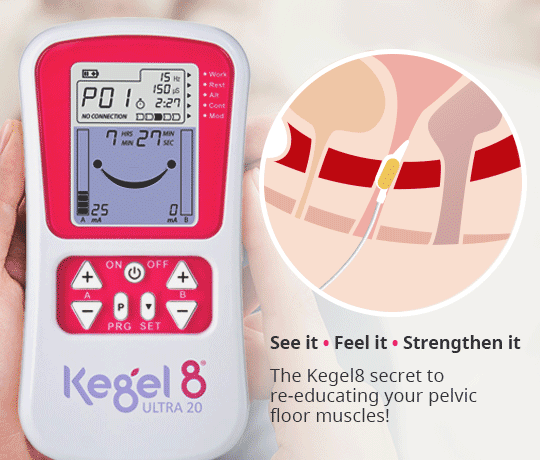
Are you doing your Kegel exercises but not seeing any improvement? It's great that you are keen to strengthen your pelvic floor but are you guilty of doing any of these top 5 Kegel exercise mistakes?
1. Using Incorrect Muscles
Kegel exercises may sound easy, but unfortunately they aren’t. The hard part is locating the correct muscles.
1 in 2 women perform Kegel exercises incorrectly, pushing down on their pelvic floor muscles which causes more damage, instead of correctly squeezing and lifting. If you're unsure as to whether you're doing your pelvic floor exercises correctly, there are tools available to help.
Biofeedback tools, such as the Kegel8 Vaginal Cones, are useful to understand how to perform a correct pelvic floor muscle contraction. The Kegel8 Vaginal Cones have a unique indicator tail that lets you know, in real-time, whether you are exercising your pelvic floor muscles correctly. Unfortunately, 30% of women are unable to recruit their pelvic floor muscles - but it's not the end of the road! You can automatically exercise your pelvic floor muscles uses an electronic pelvic floor toner. Devices, such as the Kegel8 Ultra 20 Electronic Pelvic Toner, harness your body's natural electric signals to stimulate muscle contractions in your pelvic floor - all with the push of a button.
2. Not Switching Things Up
Your pelvic floor is made up of 2 types of fibre - slow-twitch and fast-twitch.
Your slow-twitch muscle fibres are responsible for prolonged bladder and bowel control - enabling you to get to a toilet in time, or to last longer through the night.
Your fast-twich muscle fibres are the fibres that should respond quickly to support your bladder under sudden bursts or pressure like coughing, sneezing, laughing, jumping and running.
To strengthen your pelvic floor fully you need to alternate between fast and slow kegel exercises.
3. Forgetting to Relax
Many women think that the longer you hold a Kegel for the better, but this is not true. Contracting your pelvic floor muscles for a long period of time will cause tightening not strengthening and you don’t want that!
Performing relaxation Kegels can put you in tune with your pelvic floor muscles so that you can become more aware of your pelvic floor movement and ensure you are fully relaxing the muscles.
Relaxation is as imperative as strength for your pelvic floor muscles to stay healthy. To perform relaxation Kegels, slowly relax your pelvic floor muscles as if there is a weight inside your vagina that you are slowly letting drop. To see clearly whether you are relaxing your pelvic floor muscles correctly, use a biofeedback tool such as the Kegel8 Vaginal Cones.
4. Not Tracking Progress
Because you can’t ‘see’ your pelvic floor muscles it doesn’t mean you can’t keep track of your progress. It's important to know whether your pelvic floor muscle strength is improving or still needs more work.
Using a biofeedback machine like the Kegel8 Biofeedback Pelvic Trainer will help you keep a track of your ‘squeeze scale’.
5. Giving Up Too Soon
If you haven’t given your muscles 12 weeks to show improvement then you are giving up too soon! You must give your muscles at least 12 weeks of daily exercise to notice a marked improvement.
What you can do if you are making these Kegel exercise mistakes?
If you are guilty of any of the above don't worry, you can soon rectify your issues with our range of Kegel8 electronic pelvic toners - they do all the hard work for you!







